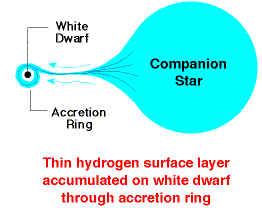Today, astronomers search for SN in far away galaxies, such as M 51. Hundreds are detected each year (list here). SN1987A is unique because it was nearby (the last naked eye Supernova was in 1604) and and the star that exploded had been previously studied (it was a massive blue supergiant). This confirmed that indeed, massive stars DO explode.

 Supernova from low mass stars
Supernova from low mass stars